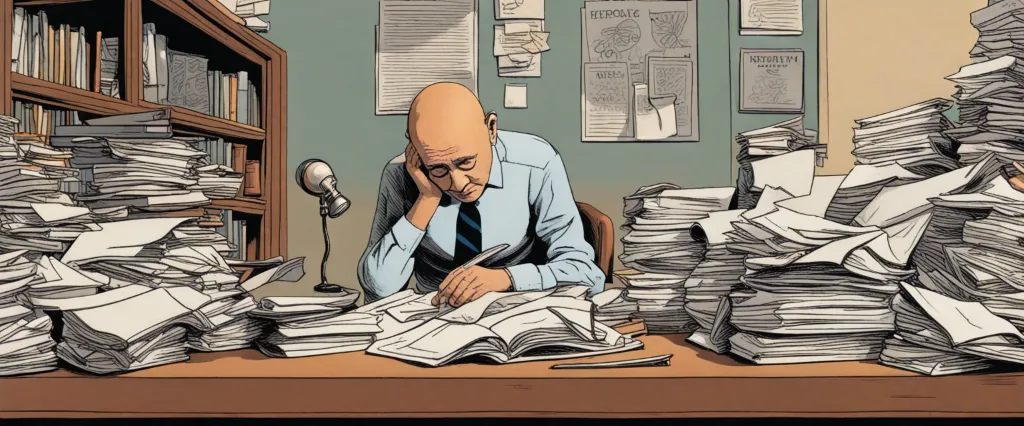——The Zero Marginal Cost Society by Jeremy Rifkin & Seeing What’s Next by Clayton M. Christensen

Literature has long been a medium for exploring diverse perspectives, challenging existing ideologies, and fueling intellectual debates. In the realm of economics and business, books have traditionally presented contrasting viewpoints and visions for the future. In this comparative study, we delve into two compelling works – The Zero Marginal Cost Society by Jeremy Rifkin and “Seeing What’s Next” by Clayton M. Christensen. Both books offer distinct insights into the evolving landscape of technology, capitalism, and their implications for society.
In “The Zero Marginal Cost Society,” Jeremy Rifkin presents a thought-provoking analysis of how the convergence of communication, energy, and transport technologies is revolutionizing the very fundamentals of our economic system. Rifkin argues that the rise of the Internet of Things, renewable energy sources, and collaborative business models is leading us towards a post-capitalist future. He contends that by leveraging the potential of these technologies, we can overcome scarcity, address climate change, and create a more equitable society.
On the other hand, Clayton M. Christensen’s “Seeing What’s Next” offers a different perspective, primarily focusing on the concept of disruptive innovation and its impact on various industries. Christensen explores how disruptive technologies have historically reconstructed markets, displacing established companies and creating new opportunities. He emphasizes the importance of identifying and responding to these transformative forces to ensure success and avoid obsolescence.
While both books address the influence of technology on our economic landscape, they present divergent views on the outcomes and repercussions of these advancements. Rifkin proposes a future built on decentralized networks and the sharing economy, challenging the very foundations of capitalism, while Christensen analyzes the dynamics of disruptive innovation, urging businesses to adapt and evolve within the existing market structure.
In this comparative study, we aim to critically assess the core arguments put forth by Rifkin and Christensen and explore the extent to which their theories align, diverge, or intersect. By examining their contrasting viewpoints, we hope to gain a comprehensive understanding of the complexities surrounding the impact of technology on economics, society, and the future.
Through an analysis of the authors’ key concepts, supporting evidence, and underlying assumptions, this study will evaluate the strengths and weaknesses of each perspective. By doing so, we seek to shed light on the potential transformations, challenges, and opportunities that lie ahead as we navigate an increasingly technology-driven world.
In conclusion, both “The Zero Marginal Cost Society” and “Seeing What’s Next” provide unique insights into the relationship between technology, economics, and societal structures. These books invite us to challenge prevailing notions and envision possible futures. By comparing and contrasting the ideas presented by Rifkin and Christensen, we endeavor to foster a more nuanced understanding of the complex forces shaping our world and pave the way for informed discourse on the paths we choose to embark upon.
Brief Summary of Two Books
The Zero Marginal Cost Society by Jeremy Rifkin
“The Zero Marginal Cost Society” by Jeremy Rifkin explores the emergence of a new economic system driven by advancements in technology. Rifkin argues that the combination of internet communication, renewable energy, and 3D printing will lead to a nearly costless production and distribution of goods and services, resulting in the marginal cost of production approaching zero.
The book suggests that the traditional capitalist market may be replaced by a “collaborative commons,” a sharing economy based on the notion of open-source collaboration and peer-to-peer sharing. This shift would challenge existing business models and have profound implications for society, from the nature of work and employment to changes in ownership and governance structures.
Rifkin emphasizes the importance of renewable energy in facilitating this transition, highlighting the potential of decentralized energy production and the role of the internet in creating an energy internet. He argues that as renewable energy becomes more accessible and affordable, it will empower communities and individuals to generate their own energy at a minimal cost, further reducing the marginal cost in the economy.
The book also explores the potential impact of 3D printing and additive manufacturing technology. Rifkin suggests that as 3D printers become cheaper and more capable, production will be localized and democratized, enabling individuals and communities to independently create a wide range of goods and disrupting traditional manufacturing models.
Overall, “The Zero Marginal Cost Society” presents a vision of a future economy where the driving force is not profit but rather collaboration, shared resources, and sustainability. Rifkin argues that this transformation has the potential to address issues such as inequality, climate change, and resource scarcity, leading us toward a more inclusive and sustainable society.
Seeing What’s Next by Clayton M. Christensen
Seeing What’s Next” by Clayton M. Christensen is a groundbreaking book that delves into the theory of disruptive innovation and its implication for various industries. The book expands upon Christensen’s previous works and explores how to identify and respond to signals of disruptive change in the business world.
The book begins by defining disruptive innovation as a process by which smaller, simpler, and cheaper technologies or services initially cater to niche markets or underserved customers, eventually gaining traction and displacing incumbents. It emphasizes that disruptive innovation is not limited to technology-driven sectors but can also occur in non-technology industries like healthcare, education, and finance.
Christensen provides a comprehensive framework consisting of three distinct elements: technological enablers, potential markets, and business models. He illustrates how these elements interact in different industries and offers examples of successful and unsuccessful responses to disruptive change. The book emphasizes the importance of focusing on non-consumers and new market segments that are generally overlooked by traditional players in an industry, as this can lead to substantial growth opportunities.
Moreover, Christensen introduces the concept of “disruptive trajectories,” which explains how disruptions develop and evolve over time. He provides insightful analyses of various case studies spanning industries such as digital cameras, steel production, health insurance, and higher education, showcasing how companies succeeded or failed to respond to disruptive forces.
Throughout the book, Christensen emphasizes the need for established companies to proactively adapt and transform themselves to survive in the face of disruptive innovation. He highlights the dangers of complacency and the consequences of failing to recognize disruptive change until it’s too late. The book encourages executives and managers to adopt a mindset of continuous learning, experimentation, and openness to new possibilities.
In summary, “Seeing What’s Next” offers a comprehensive analysis of the theory of disruptive innovation and its real-world implications. It provides valuable insights and practical guidance for individuals and organizations seeking to identify, embrace, and navigate disruptive change in order to sustain long-term success.
Comparison between Two Books

Similarities in Social Change
Both The Zero Marginal Cost Society by Jeremy Rifkin and Seeing What’s Next by Clayton M. Christensen explore the concept of social change, albeit each through a different lens. While Rifkin focuses on the potential of the zero marginal cost economy and its impact on society, Christensen delves into disruptive innovation and its transformative effects on various industries. Despite these differences, there are some important similarities in their discussions of social change:
1. Empowerment through technology: Both authors emphasize the role of technology in driving social change. Rifkin highlights the internet, renewable energy, and broadband communication, while Christensen talks about the Internet of Things, digitalization, and new business models. They argue that these technological advancements empower individuals and businesses, enabling them to make significant changes in how they operate within society and industries.
2. Democratization of production: A common theme in both books is the potential for technology to democratize production. Rifkin discusses the rise of collaborative commons, sharing economies, and open-source innovation, which he believes can empower individuals to contribute to and benefit from the production process. Christensen explores how disruptive innovation can democratize access to markets, enabling newcomers to challenge the established players and reshape industries.
3. Disruption of existing structures: Rifkin and Christensen both recognize that social change often entails the disruption of existing structures and systems. Rifkin points to the potential disruption of traditional energy, transportation, and manufacturing systems by renewable energy, sharing platforms, and 3D printing. Similarly, Christensen highlights how disruptive innovations often challenge and displace established businesses and industries, leading to major socio-economic shifts.
4. Economic and social bifurcation: Both authors acknowledge the potential for social change to exacerbate economic and social inequalities. Rifkin warns about the possibility of a “collapsing capitalist market” and the need to address issues such as job displacement and income inequality in the transition to the zero marginal cost society. Christensen discusses the risk of innovation leading to job losses and the need for proactive measures to ensure the benefits of disruptive change are widely distributed.
5. Environmental sustainability: Another similarity between the books is the recognition of the need for environmental sustainability in driving social change. Rifkin emphasizes the potential of renewable energy and zero-emission transport to revolutionize our energy systems and combat climate change. Christensen also discusses how market disruptions can lead to more environmentally sustainable alternatives, highlighting the potential for social change to address pressing environmental challenges.
In conclusion, although Jeremy Rifkin and Clayton M. Christensen approach the concept of social change from different angles, their works highlight similar themes such as the empowering role of technology, the democratization of production, disruptive effects on existing structures, concerns about economic and social inequalities, and the importance of sustainability in driving social change.
Divergences in Social Change
The Zero Marginal Cost Society by Jeremy Rifkin and Seeing What’s Next by Clayton M. Christensen are two books that analyze the impact of technology and social change on our society. While both books acknowledge the importance of technology in shaping the future, they diverge in their approach to understanding the implications of this change.
In The Zero Marginal Cost Society, Rifkin argues that with the advent of the Internet of Things (IoT) and a sharing economy, we are moving towards a society where digital goods and services have a near-zero marginal cost of production. Rifkin argues that this shift will fundamentally transform capitalism and open up opportunities for collaboration, sustainability, and increased leisure time. He focuses on the potential of renewable energy, the rise of decentralized production, and the importance of social capital in this new era. Rifkin’s book emphasizes the need for a hybrid economy that combines elements of both capitalism and shared collaboration, ultimately leading to a more empathetic and sustainable society.
On the other hand, in Seeing What’s Next, Christensen and his co-authors focus on disruptive innovation and its impact on various industries. They argue that successful organizations are often disrupted due to their inability to adapt to emerging technologies and changing customer demands. The book analyzes case studies of industries ranging from media, healthcare, and education to demonstrate how disruptive technologies can revolutionize markets. Christensen’s perspective is more business-oriented, focusing on strategic decision-making and the importance of anticipating and responding to disruptive innovation rather than focusing on broader social change.
The divergence in these books lies in their focus on social change. Rifkin’s The Zero Marginal Cost Society delves into the broader implications of technology on society, proposing a new economic paradigm. The emphasis is on how technology can create a more equitable, collaborative, and sustainable future. In contrast, Seeing What’s Next by Christensen primarily explores the impact of technology on industries, highlighting the importance of adapting to remain competitive. While Christensen does touch on the broader implications of disruption, his focus is more on providing strategic insights for businesses rather than addressing societal change as a whole.
In summary, both The Zero Marginal Cost Society and Seeing What’s Next analyze the impact of technology on society, but they differ in their approach. Rifkin’s book explores the potential for social change and a new economic paradigm, while Christensen’s work focuses on the implications of technology within industries and strategic decision-making for businesses.

Conclusion
Both “The Zero Marginal Cost Society” by Jeremy Rifkin and “Seeing What’s Next” by Clayton M. Christensen offer insightful perspectives, but their focus and subject matter differ significantly. The choice of which book is more worth reading depends on your specific interests and what you hope to gain from the reading experience.
“The Zero Marginal Cost Society” explores the idea of the sharing economy, the rise of renewable energy technologies, and the potential transition to a post-capitalist society. Rifkin argues that the Internet of Things, automation, and collaborative consumption will lead to a near-zero marginal cost society, fundamentally changing our economic systems. If you are interested in sustainability, technology’s impact on society, or alternative economic models, this book would be more worthy of your reading.
In contrast, “Seeing What’s Next” written by Clayton M. Christensen, along with his co-authors Scott D. Anthony and Erik A. Roth, delves into the theory of disruptive innovation. The book focuses on providing frameworks and strategies to identify and respond to disruptive technologies in the business world. It analyzes industries such as telecommunications, publishing, and personal computing to explain how disruptive innovations can reshape markets. If you are intrigued by business strategy, innovation, or want to understand how established companies can avoid disruption, this book would be more worth your time.
Ultimately, consider your personal interests and what you hope to gain or learn from reading either book. Both provide valuable insights, but their subject matter and focus differ significantly.



